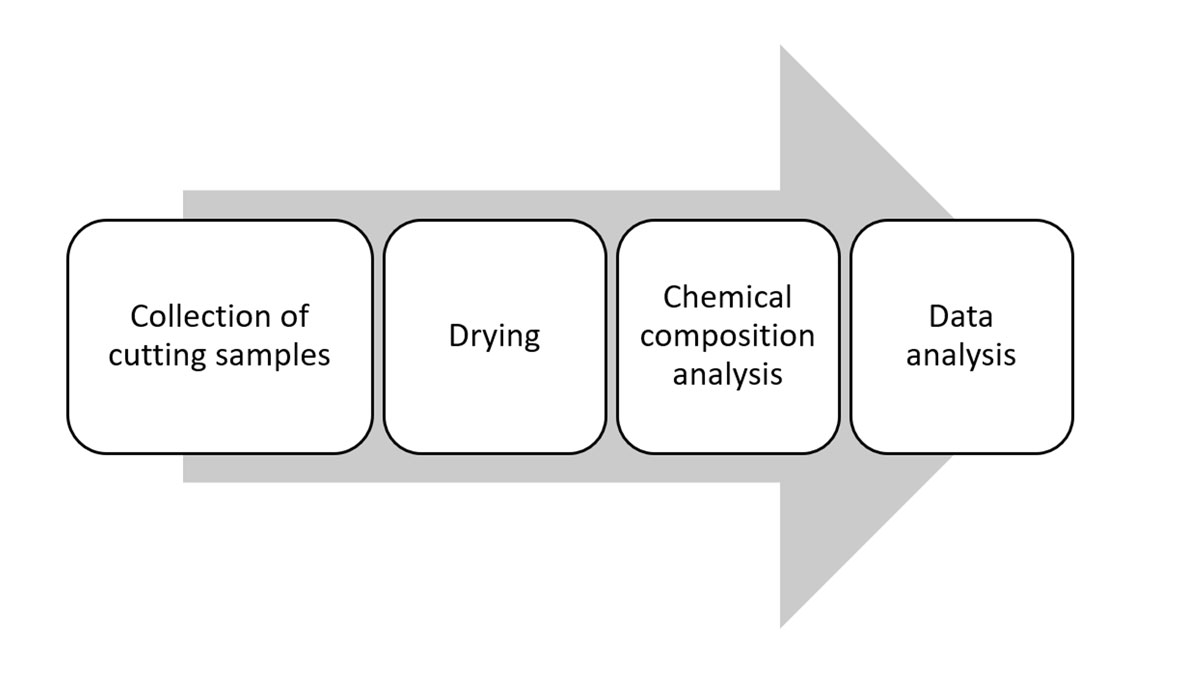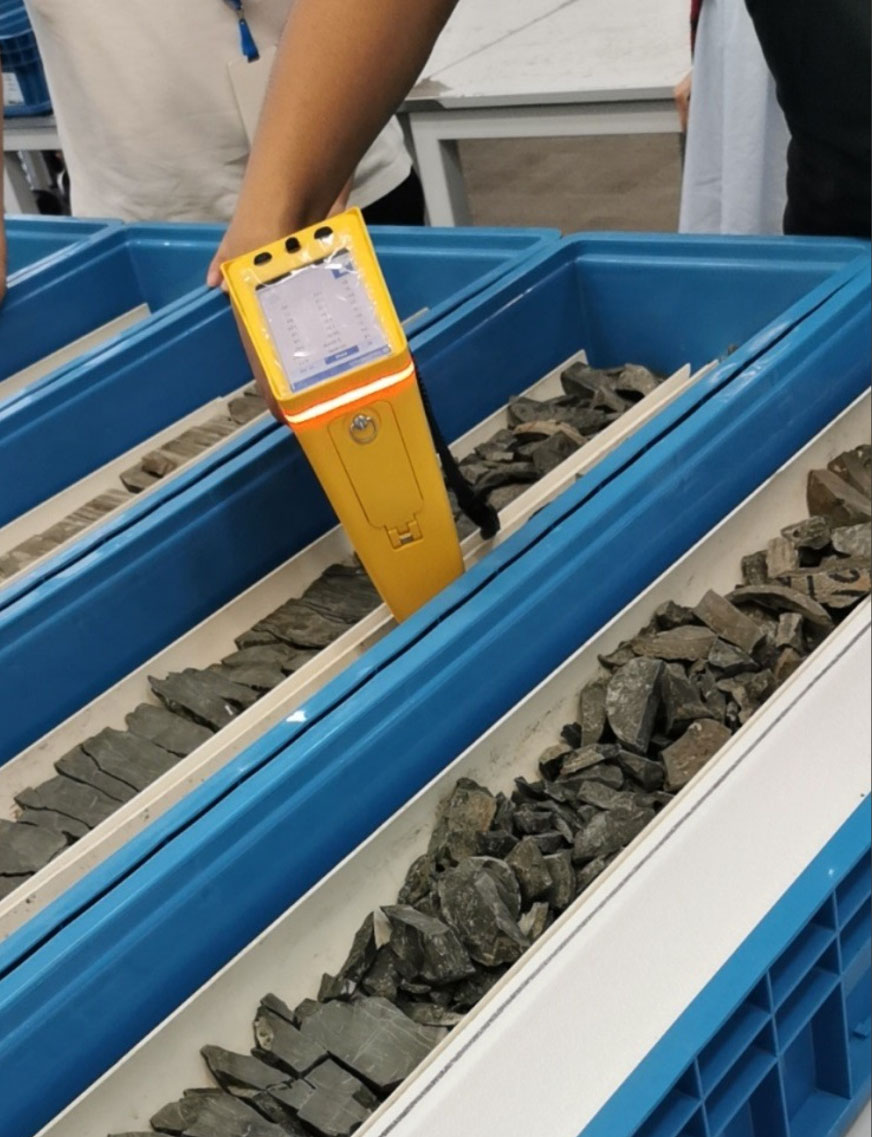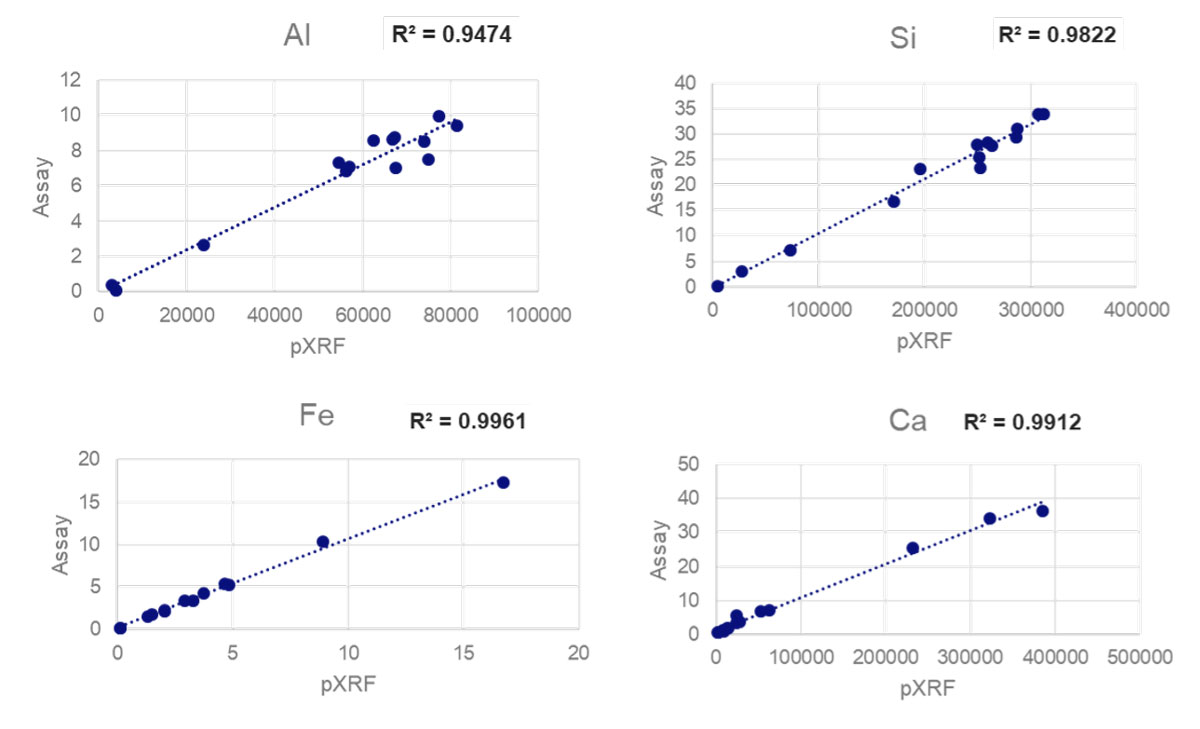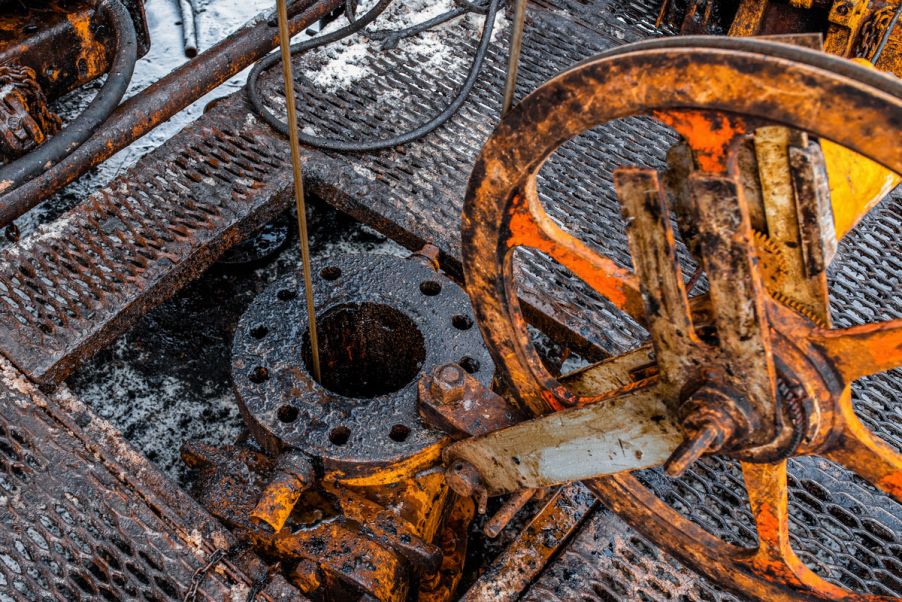In the prospecting and development of oil and gas fields, mud logging is an essential technique to study the geological conditions. Mud logging is the process of creating a detailed record—known as a well log—of the geologic formations found in the borehole by studying the rock cuttings brought to the surface while drilling.
Analyzing the cuttings collected at different depths during drilling helps mud logging technicians understand the distribution of oil and gas fields in a region. This information is used to inform the drilling process and increase development efficiency.
When the analysis of cuttings is done on-site rather than sent to a lab, mud logging technicians can optimize the drilling direction in real time. One technology that provides on-site analysis in geological prospecting and mud logging is handheld X-ray fluorescence, also known as handheld XRF (HHXRF) or portable XRF (pXRF).
Put simply, handheld XRF analysis provides qualitative and quantitative information about the chemical elements in a sample. It is commonly used in the geological prospecting, mining, and metallurgical industries.

Oil and gas exploration
Technicians use handheld XRF in geological prospecting and mud logging to get information about the elements present in the rock cuttings and identify lithological characters through the characteristics of element association.
The lithological combination can be used to determine the rock strata (i.e., layers of rock), identify the presence of oil or gas, or assess the strata conditions in the region through insightful analyses.
Handheld XRF vs. Lab Analysis for Geological Prospecting and Mud Logging
Handheld XRF analyzers offer both precision and ease of use for the analysis of rock cuttings and core samples. Compared to traditional lab analyses, handheld XRF has the following benefits:
- On-site analysis and testing with real-time measurement results
- Easy sample prep with fewer requirements for the samples
- Shortened analysis time with quick chemical test results
- Low cost of ownership without cumbersome and complicated calibration and maintenance
In mud logging applications of rock chips, where PDC drilling, air drilling, and other modern drilling techniques are widely applied, the collected rock chip samples are even more fragmented. This presents a greater challenge to conventional test methods that require you to bring the sample off site for analysis. In this case, technicians can use a handheld XRF analyzer to get reliable results in the field and in real time without complicated sample prep.
Oil and Gas Field Prospecting—A Case Study
Our engineers once visited a customer located at the border of Shaanxi and Gansu provinces in China to analyze and test their samples using a Vanta™ handheld XRF analyzer (VCA model). We tested rock chip samples of different lithological characters, such as mudstone, sandstone, magmatic rock, and metamorphic rock. The test analyzed the contents of the trace elements aluminum (Al), silicon (Si), and iron (Fe), as well as calcium (Ca), in the rock chip samples.

Analyzing and testing processes of rock chip samples

Handheld XRF analysis of rock chip samples

Comparison of Al, Si, Fe, and Ca content in rock chip samples measured using the Vanta handheld XRF analysis and lab analysis
Portable Analysis Tools for Geological Prospecting and Mud Logging
In geological prospecting and mud logging applications, our Vanta handheld XRF analyzer offers several advantages:
- Vanta series analyzers are powered by Axon™ technology, so you know each analyzer has high throughput, low resolution, low limit of detection (LOD), and excellent reproducibility of results
- Built for field conditions, each analyzer is IP55 or IP54 rated for water and dust resistance, drop tested to military standards (MIL-STD-810G), and works within a broad temperature range of -10 °C to 50 °C (14 °F to 122 °F)
- Easy to operate after a simple training process
For more information about portable XRF in geological prospecting, mudlogging, and other field applications, reach out to us today.
Related Content
Handheld XRF in Exploration Drilling: Reverse Circulation/Rotary Air Blast and Diamond Core
Plan a Successful Portable XRF Program for Geochemistry: 9 Free Video Tutorials to Get Started
Portable XRF for Analysis of Mercury-Contaminated Oil and Gas Assets
Get In Touch


